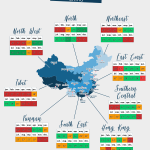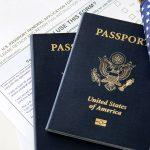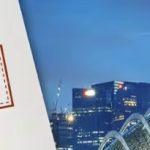Leifeng Pagoda as an important cultural and historic attraction in the West Lake Scenic Area is quite familiar and well-known both in Chinese folk culture and Chinese literature history. Lu Xun(鲁迅,esteemed as the most influential and world-renowned writer of Modern China) once wrote a themed article with Leifeng Pagoda, whose name is Lun Lei Feng Ta De Dao Diao(论雷峰塔的倒掉, Comments about the collapse of Leifeng Pagoda, the selected article of secondary school Chinese textbook nationwide except Hong Kong, Macau and Taiwan). Thanks to this article, Leifeng Pagoda as a symbol of China traditional culture and the scapegoat of suppressing Lady White is profoundly remembered by youngsters born in 60s, 70s and 80s in 20th century. In a word, Leifeng Pagoda is a shining pearl of the West Lake Scenic Area.

The Name Evolutional History of Leifeng Pagoda
Because of being built on the Leifeng Peak or Thundering Peak of Xizhao Hill on the southern side of The West Lake, it in folk community is called Leifeng Pagoda. Leifeng Peak is the middle peak of Xizhao Hill, which Lin Bu, a Taoist-oriented poet of North Song Dynasty, portrayed to be a fairyland in his poem titled Zhong Feng Shi (中峰诗, Poem of Middle Peak): 中峰一径分,盘折上幽云,夕照前村见,秋涛隔岭闻, which can be directly translated into A hilly path marking the Middle Peak is up to heavenly cloud. Afterglow showing in front village and the wave sound of autumn can be heard via the separated peaks. It is really a perfect destination for traveling.
Since then, widely known as Leifeng Pagoda, fewer and fewer people knew its real name, which was Huang Fei Ta(黄妃塔, Concubine Huang Pagoda). During some period, it was also called Xi Guan Zhuan Ta(西关砖塔, The West Pass Pagoda Made of Bricks). Why is it also named Huang Fei Pagoda? In 977, to pray for the peace of nation and the safety of people, Qian Chu(钱俶), the king of Wu Yue State, which later was peacefully attached to North Song Dynasty. Qian Chu was assigned to King of Deng and he deeply believed Buddhism and built up innumerous pagodas in Hangzhou, which surely include Leifeng Pagoda. He built up this Buddhist pagoda on the Xizhao Hill of the southern side of the West Lake. The basement of the pagoda has the well-type underground palace collecting many treasured cultural relics as well as exquisite oblation objects such as Ayuwang Pagoda made of pure silver preserving the Sheli of Buddha’s hair as well as Statue of Sakyamuni Sitting on Long Lotus Seat. In some bricks on the body of the old pagoda, some secretly-hidden and rarely-seen Buddhist sutras are well preserved over there.
The History of Leifeng Pagoda
In 1120, Leifeng Pagoda was seriously ruined by wars. During the period from 1195 to 1200, Leifeng Pagoda was reconstructed. Its building complex and the furnishings were splendid, especially the landscape the beauty of Leifeng Pagoda at dark, which is in perfect harmony with the sunset, so it was officially named Lei Feng Xi Zhao or Sunset Glow of Leifeng Pagoda in Li Song’s famous Painting of West Lake(西湖图), and it was listed into Ten Top Scenes of The West Lake. After Southern Song Dynasty, Sunset Glow of Leifeng Pagoda was one of the most welcomed destinations for visitors’ West Lake Tour. During the time from 1522 to 1566, the invading short stature bandits from Japan troubled the whole Hangzhou city and burnt down Leifeng Pagoda. It was a big shame to late ancient China actually.
During early period of Qing Dynasty, the relic of Leifeng Pagoda body showing its beauty of incompleteness as well as the related legend of the Lady White Snake made The Scene of The Sunset Glow of Leifeng Pagoda become a well-renowned place of interest. Even Emperor Kangxi and Emperor Qianlong of Qing Dynasty used to visit here and gave the inscriptions for Leifeng Pagoda, which was said to be written officially by Emperor Kangxi as one of ten scenic inscriptions of the West Lake. In many books, this scene was attentively mentioned and emphasized like a book named Xi Hu Zhi(西湖志, The Record of The West Lake) completed in Qing Dynasty.
From the later period of Qing Dynasty to the early time of the Nationalist Government, in folk society, hearsay went widely that the bricks of Leifeng Pagoda had the special role of avoiding evilness, benefiting boy birth and sericiculture, and many bricks were stolen. In 1924, the disfeatured Leifeng Pagoda was collapsed, and some important relevant cultural relics were released. In 2000 0r s0, for rebuilding the pagoda, the base of the old site was cleaned and a lot of cultural relics and treasures were found again like the jade-made figurines and jade coins, Sakyamuni statue made of gold and copper and copper-made mirrors. The collapse of Leifeng Pagoda also brought the wide attention of the whole society. Different walks of life were eager to reconstruct this old pagoda.
The Reconstruction of Leifeng Pagoda in the 21th Century
By the end of 1999, Hangzhou Municipal Government and Zhejiang Provincial Government officially made a decision to reconstruct and extend the original Leifeng Pagoda according to the principle of preserving the cultural relics. The reconstruction project kicked off on Dec. 22. 2000 and was completed on Oct. 25, 2002. Since its collapse, there were more than 70 years that the Leifeng Pagoda was in ruins, a lot of domestic learners continually appealed for reconstruction. Huang Yanpei(1878-1965, 黄炎培), the late Vice-Chairman of National People’s Congress, appealed for many times nationwide. He directly questioned the whole nation who was the reconstructor of Hangzhou and who could restore the beauty of Leifeng Pagoda. Liang Sicheng(1901-1972,梁思成), one son of Liang Qichao and the world-famous architect painted the restoring picture of Leifeng Pagoda in 1931. In 1932, the plan of reconstructing Leifeng Pagoda was confirmed when Baochu Pagoda was under reconstruction in 1932, but due to the problem of financing, it did not be realized. After the establishment of The People’s Republic of China, a lot of people proposed the plan of reconstructing Leifeng Pagoda. A lot of famous academic scholars paid a lot of attention to the reconstruction of Leifeng Pagoda like Chen Congzhou, the famous gardening architecture master, as well as Wu Yin, the famous architect.
The reconstruction of Leifeng Pagoda in the history of Chinese scenic spot protection and construction creates four No.1: Steel-made structure as the architectural brace of towers and large pagodas for bearing creates the first No.1; the largest amount of copper-made parts as well as the largest area of coppery decoration in pagoda construction create the second No.1. The interior room is the largest among pagodas, which also creates the third No. 1; the cultural displays in pagodas are the richest among the pagodas in the world, which creates the fourth No.1.
The newly-built Leifeng Pagoda was established on the former site and it preserved the traditional pavilion style of building, which is thoroughly rebuilt in line with the style, size and design of the original when it was rebuilt in early period of Southern Song Dynasty. The whole design and structure is absolutely featured with the traditional building style of Jiangnan Region of China in ancient times. The new pagoda is 71.679 meters high and comprised of the base, the body and the top. The body is 49.17 meters and the top is 18.25 meters high. Basically, the whole pagoda was modernized actually; it is facilitated with elevator for visiting as well. It is indeed a good destination to appreciate the beauty and charm of the whole West Lake as well as some part of Hangzhou Metropolitan Zone.
By the way, as the destination of cultural and historical site, a large number of poems and poems concerned are available in Leifeng Paogda. In Seeraa, we serve some of them in Chinese and hope it can be helpful for your understanding of this widely famous Buddhist pagoda.





















